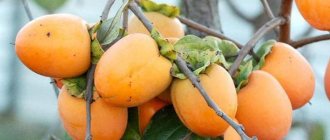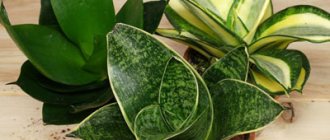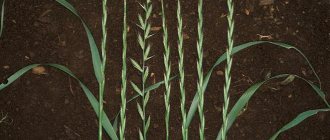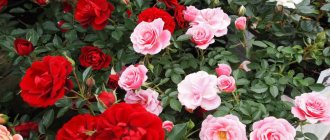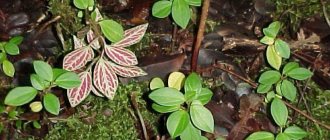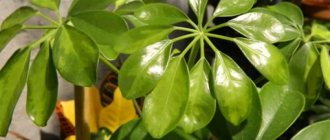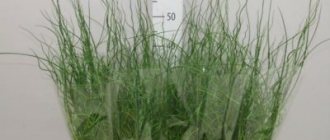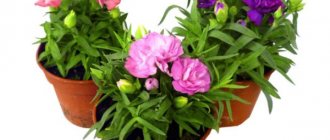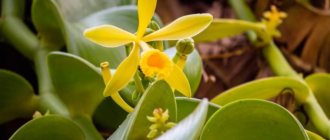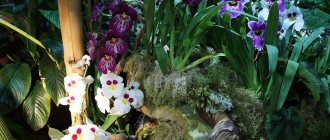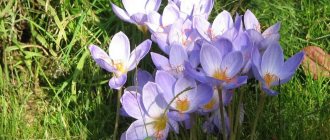Description of ryegrass lawn
Ryegrass shoots are highly branched and covered with small leaves painted bright green. The powerful root system is characterized by rapid growth. The plant does not lose its rich green color until the first frost. When pruned and mowed, it can recover in a short time. Beautiful and elegant grass grown in the same place can last for more than 5 years.
Perennial ryegrass is a perennial and is highly resistant to trampling compared to other varieties of lawn grass. Despite all its advantages, the plant does not tolerate excessive waterlogging of the soil, and therefore often dies in the event of floods or flooding of the area. If there is no snow cover in winter or the temperatures are too low, the roots of the grass freeze.
Perennial ryegrass has several names, for example, perennial ryegrass, English or perennial ryegrass.
Under natural conditions, it can be found in Europe or North Africa. Sometimes the grass grows in certain regions of Asia.
Botanical description of the plant
Perennial ryegrass or perennial ryegrass is a herbaceous flowering plant and belongs to the Poaceae family. Has a high growth rate. In the first season after planting, it forms a dense lawn carpet - from 40 to 60 units per 1 m². The flowering phase lasts from June to September. The fruits appear in July - October. The grass stand can last from 5 to 7 years if there are optimal conditions for growth.
Botanical description of perennial ryegrass:
- the rhizome is powerful, well branched, forms a dense turf, which helps strengthen the soil;
- plant height - 70 cm, in cultivation usually from 15 to 50 cm;
- stem - erect, smooth;
- leaf blades - grow up to 20–30 cm and 3–5 mm in width, painted in a rich green color, tapered towards the end, smooth, rough in places where the veins pass;
- at the base of each leaf there is a reddish ear;
- inflorescences are solitary, formed at the ends of shoots, and are complex spikes up to 15 cm long;
- fruits - grains.
Growing ryegrass from seeds
Perennial ryegrass is grown from seeds that are sown directly in open ground. Before planting, it is necessary to prepare the area. Remove weeds and large stones, dig up the soil so that it has time to settle before sowing. Shortly before sowing, it is necessary to further compact the soil and level the surface. It is not recommended to choose a site with a slope angle of more than 30 degrees, otherwise the soil will slide.
In the fall, it is better to enrich the area for growing ryegrass with potassium and phosphorus fertilizers. In spring, the soil needs to be fertilized with nitrogen compounds.
The optimal time for sowing is considered to be early spring, when the air temperature does not drop below 2-4 degrees. If it is possible to constantly water the lawn, then the seeds can be sown throughout the whole summer. They are scattered onto the prepared area and covered with a thin layer of soil. A week later, under favorable weather conditions, the first shoots appear.
With the arrival of summer, it is necessary to regularly water the lawn grass. Then it will begin to grow actively and form a lush and thick carpet. Throughout the season, it is necessary to mow the lawn several times to maintain its attractive appearance and curb the active growth of shoots.
The consumption of this pasture perennial during sowing may vary. As a rule, to fill 1 hectare of land you will need to use about 14 kg of a mixture of pure ryegrass. If you use a grass mixture, then its consumption will not exceed 10 kg.
A full, thick coating is formed very quickly. A lawn mower is used to cut the grass. The shoots have an excellent ability to recover, so after some time they again cover the area with a bright green carpet.
As for the grass mixture, of course, a mixed type of lawn looks much prettier, but some grasses will require more care than a pure ryegrass variety.
Planting material can be purchased at stores that sell garden plants. When ryegrass is already growing on the site, you can stock up on seeds on your own. When mowing, simply leave a small area of grass untouched for the ripening of spikelets. After they turn yellow, the spikelets are cut off and the seeds are removed.
Perennial ryegrass does not tolerate cultivation in lowlands and areas prone to flooding. The plant is unpretentious in the choice of soil, but will not grow in acidic soil. Fertile and loamy soil types are well suited for this lawn grass.
Selecting a location and sowing rules
You can choose any terrain for sowing ryegrass seeds ; the main thing is that it is not flooded by natural precipitation in the spring and autumn. The main condition for good growth is high-quality pre-sowing soil preparation. It is best to carry out planting work in early spring, when the danger of return frosts has passed. This will allow you to enjoy a beautiful lawn in the summer. But if necessary, sowing can be carried out throughout the warm season, until the beginning of October.
Soil preparation should begin approximately six months before planting . At the first stage, the site is cleared of plant debris and weeds. Then they plow the ground to a depth of 40 cm and begin disinfection. For this, herbicides are used - such preparations help prevent future germination of weeds on the lawn. The drug “Tornado” has proven itself well: it is diluted in a proportion of 75 ml per 3 liters of water and this amount is enough to treat 100 m² of area. The solution is sprayed over the site.
3 weeks after treatment with herbicides, you can begin to enrich the soil with nutrients. For ryegrass to develop well, the soil must be loose. To ensure this condition, 10 kg of peat and sand are added for every 1 m² of area. In parallel with these elements, manure is laid: 10 kg of cow feces or 3 kg of bird feces are taken per 1 m². Immediately after adding nutrients to the soil, it is plowed again to a depth of 40 cm.
Step-by-step process for sowing ryegrass:
- 3 days before the manipulation - add 40 nitroammophoska for every 1 m². Spread the fertilizer evenly over the soil surface, then water. If the soil is moist enough, the fertilizer should be embedded into it to a depth of 5 cm.
- Divide the area into small squares of arbitrary size - this will allow you to evenly distribute the planting material. To accomplish the task, it is best to place stakes at equal distances along and across the entire perimeter of the site, and stretch threads or wire between them, thus creating square zones.
- The seed consumption rate per 1 ha is 10 kg. Based on this parameter, the entire mass of planting material should be divided evenly for each zone.
- Scatter the seeds crosswise in each square.
- Rake over the crops, following the direction of planting (crosswise). This will allow the seeds to be buried to the required level.
Lawn care ryegrass
Watering
The first thing you need to pay special attention to is regular watering of the grass. Ryegrass does not respond well to drought, and excessive waterlogging of the area can cause the death of the roots. Before sowing, it is also necessary to saturate the soil well with water. During the growing period of the lawn, organic fertilizers are added to the soil.
A haircut
Do not be afraid of frequent mowing of grass, as it can quickly grow back and cover the garden area. The plant is resistant to pests and diseases. This lawn grass practically does not get sick.
Wintering
Frosty, snowless winters pose a danger to the cultivation of perennial ryegrass, during which a large percentage of vegetation is lost. Young seedlings may die during late spring frosts. If voids become noticeable in the area where the grass grows, then such gaps are filled with seeds.
The most optimal conditions for growing are moderate climatic parameters. The roots of lawn grass can withstand no more than -18 degrees below zero. If the surface of the site is protected by a thick snow cover, the chances that the lawn will survive increase.
Features of cultivation and winter hardiness
The main care consists of moderate irrigation in hot, dry summers, since a lack of water has a detrimental effect on growth and development, and overwatering leads to rotting of the root system.
Before sowing, it is imperative to fertilize the soil. During the growing season, biocompost fertilizing is carried out. Since grass regenerates quickly, it needs to be mowed or sheared several times a season.
Perennial ryegrass is adversely affected by severe frosts and snowless winters. During harsh winters, you can lose much of the vegetation. Tender sprouts do not tolerate spring frosts well, so when inspecting the lawn in the spring, you need to reseed frozen areas.
The plant is best grown in regions with a temperate climate, where the air temperature in winter does not fall below -18 degrees.
Beneficial features
Perennial ryegrass is often found in agriculture. Rapid grass growth begins in April. In May, the lawn can be used as pasture. The plant produces a rich harvest of dense, nutritious greens that serve as feed for cattle, horses or sheep. Under favorable conditions, up to 400 centners of grass mixture are obtained from one hectare of land. The same plot area yields from 90 to 100 quintals of hay.
Ryegrass has a positive effect on soil structure and improves its fertile qualities, reducing the risk of erosion.
How to care for perennial ryegrass grass
Grass ryegrass perennial pasture lawn photo
Basic care comes down to constant moderate watering. It absolutely does not tolerate drought, and excessive moisture provokes rotting of the root system.
Be sure to nourish the soil before sowing. During active growth, apply biocompost fertilizer.
Don’t be afraid to mow and cut ryegrass often – it quickly recovers even after strong mechanical stress.
Resistant to diseases and pests.
Ryegrass is resistant to many grass diseases. During the entire growth period, the grass rarely gets sick.
Types and varieties of ryegrass
Breeders from all over the world have tried to develop a wide variety of green coverings that can decorate sports fields and recreation areas. They are sown with individual crops or grass mixtures are used.
Grass mixtures labeled “Sport” include the following turf varieties: Greenfield van, Henrietta and Roadrunner. In addition to them, no less popular is perennial ryegrass, bred by domestic breeders:
- Leningradsky - this variety is distinguished by smooth, light green shoots and is grown mainly in the northwestern regions;
- Phoenix - characterized by creeping shoots, grows in the north and northwest of the country;
- Cinderella is a frost-resistant and easy-to-maintain tall variety of lawn grass. However, after mowing, renewal of shoots takes a long time;
- Voronezhsky is considered one of the most reproductive varieties.
Characteristics and description
English ryegrass is one of the best representatives of spring-type pasture grasses. When creating a lawn, it is often mixed with annual legumes and clover.
Due to its increased nutritional value, pasture ryegrass is used as livestock feed. When grown on carved hayfields, the grass lives in one place for 4-6 years, on pastures - up to 12 years. The culture is resistant to trampling and mechanical damage.
The plant is undemanding to soil, but grows well in well-drained loamy soil. On acidic soil, yield and quality will be reduced.
Perennial Chaff produces small, numerous shoots with shiny, narrow, light emerald foliage. The plant has spike-shaped inflorescences of brownish-green color. The spikes are formed by 5-12 flowers, which are attached to the spike shaft one by one.
Advantages of English ryegrass:
- The root system grows quickly.
- Numerous shoots retain a presentable appearance until the first frost.
- Fast regrowth after bevel.
- Green grass is resistant to trampling.
- A good combination with clover and other wildflowers.
- It is a healer for the soil, as it prevents erosion.
Despite the large number of positive qualities, spring grass has its disadvantages:
- low frost resistance;
- does not tolerate drought;
- grows poorly on lands with close groundwater.
Cons of ryegrass
- Intensive growth . If the aesthetic appearance of your lawn is important to you, then you will be forced to mow it very often.
- Does not tolerate frost well . If the winter has little snow or the spring is very cold, then individual areas may freeze. This can be easily fixed by sowing them when it gets warmer.
- It grows quickly . It is imperative to control its growth. If everything is left to chance, there will be grass everywhere. Ryegrass grows on any soil, even sand.
Benefits of the plant
Perennial ryegrass is cultivated in agriculture.
The grass begins to grow actively in April, and in May it is suitable for pasture. Due to the high stable yield and nutritional value of greens (not inferior to meadow fescue and timothy) it is used to feed cattle, horses, sheep and goats.
Speaking in numbers, perennial ryegrass produces 400 centners of green mass per 1 hectare of area. From the same area, 90-100 centners of hay are obtained per season.
The culture improves the structure of the soil (prevents erosion) and increases its fertility.
Ryegrass for lawns, varieties
Ryegrass has proven itself well both on the lawns of small garden plots and in large areas, including on the turf of sports fields:
- football
- tennis
- volleyball
- for golf
Despite the creation of many artificial surfaces, natural surfaces created by seeding grass are still valued in the world of sports. As a rule, lawns for recreation and sports are sown with both a mixture of lawn grasses and a monoculture. Ryegrass is included in many grass mixtures labeled “sport”. The content of its seeds reaches 20 - 60% in such lawn mixtures as:
- Grass fix, 60%
- Golf master, 20%
- Sports, 45%
- Sports master, 45%
- Sunshine, 30%
Ryegrass as a valuable forage crop
Ryegrass is widely used in hay and pasture farming. Its root system and metabolic processes allow it to extract the maximum amount of macro-microelements from great depths. After five to six weeks of sowing, the ryegrass is ready for its first mowing or grazing.
In good weather and proper mineral fertilizing, you can mow ryegrass three or even four times during the season. A particularly large increase in green mass is observed in the first two to three years. When applying large amounts of nitrogen, it can behave aggressively towards other crops.
Perennial ryegrass in landscape design
Lawn grass perennial ryegrass in landscape design photo
Being a high-yielding perennial crop, perennial ryegrass is perfect for creating a decorative lawn on a site, planted in park areas, and used for landscaping sports fields.
Perennial ryegrass for lawn photo in landscape design
In grass mixtures it goes well with alfalfa, pink clover, and horned iceweed.
Against the background of a ryegrass lawn, cereals such as meadow grass, fescue, and comb grass look appropriate.
Feed value and yield
Several specialized varieties of ryegrass are used in pasture and hay production. Its powerful and developed root system extracts from the soil and accumulates a large amount of micro- and macroelements in the stems. The standard number of haymakings is three, and in favorable weather, even without additional feeding, this plant can be mowed four times per season. Already in the second year, the peak growth of green mass is reached. This is the main characteristic of perennial ryegrass as an agricultural crop.
It is recommended to sow it for hay or for grazing in the fall . Then, already in early spring, it will begin to actively develop and produce a good harvest of green mass in the first year. The peculiarity of forage varieties is that they produce few inflorescences that are poorly eaten by livestock. The most popular varieties are: Malysh, Zharan, Weimar and Kantar. All of them quickly restore mown stems and form dense turf.
To obtain maximum green mass, nitrogen fertilizers are used . The yield ranges from 50 to 69 centners of dry matter per hectare. A good result is achieved by mixed sowing of ryegrass with other types of grasses for haymaking. But with an excess of nitrogen fertilizers it can inhibit the growth of neighboring plants.
Chaff or perennial ryegrass, description
Perennial ryegrass, also known as perennial ryegrass, also known as English ryegrass, is a perennial herbaceous plant. According to the botanical classification, the plant belongs to the genus Chaff from the Poaceae family, class of Monocots.
Very often the plant is found as a simple weed. It grows along roads, in any free spaces. Ryegrass reaches a height of 20 to 70 cm. Its roots are powerful and fibrous. It has a distinctive feature from other species of the genus Level - it has two types of shoots:
Perennial ryegrass (Lolium perenne L.)
Perennial ryegrass (Lolium perenne L.) is a perennial, loose-bush, short-rhizome plant with a winter development type. Does not tolerate drought, winter hardiness is weak.
Perennial ryegrass is a low-growing, loose-bush perennial grass. The leaves are thin, long (up to 30 cm and above), shiny, smooth below, rough along the veins, bright green. Unlike meadow fescue, the base of the blade has short, sometimes indistinct ears. The tongue is short, with a solid edge. The inflorescence is a straight, slightly drooping, loose brownish-green spike. Spikelets with 5-12 flowers are attached individually to the spike shaft with the narrow side, in contrast to creeping wheatgrass , in which the spikelets are attached with the wide side.
All spikelets have one glume. The lower flower scales are awnless. The glume is longer than the adjacent lemma.
Perennial ryegrass is moisture-loving and does not tolerate drought well; responsive to irrigation, but does not withstand prolonged flooding and close groundwater. Winter hardiness and spring hardiness are low. Well adapted to moderate humid climates with mild winters. It cannot withstand snowless winters. Old grass stands are more prone to freezing. One of the reasons for the insufficient winter hardiness of ryegrass is the shallow location of the tillering node from the soil surface - 8-13 mm. When breeding, this feature must be taken into account. The plant is of a mid-season winter type of development; it grows quickly in the year of sowing, but, as a rule, does not form generative stems, although in some populations they sometimes form. It produces fruiting shoots in the second, and if the grass is preserved, in the third year of life. Depending on the conditions of the year and the cultivation zone, it blooms in the second year of life in the second half of June - early July (in warm weather). Blooms in the morning. Cross-pollinated by wind. Can produce a significant number of seeds when self-pollinating. Seeds ripen in the forest zone, depending on the conditions of the year, on July 10-15 - August 5, in the forest-steppe zone - July 10-25. The seeds are lanceolate, grayish in color, 5.5-6.5 mm long, 1-1.5 mm wide, slightly concave on the inside. The stem, unlike meadow fescue , is flattened and widens towards the top.
Ryegrass is used in grass mixtures to create cultivated pastures and hayfields in the northwestern, western and central regions of the forest zone, forest-steppe of Ukraine, in certain areas of the North Caucasus, Transcaucasia and Central Asia. Grows well in moderately moist, fertile loamy, clayey and sandy soils. Like white clover, it does not develop well on acidic soils and dry podzolized sandy loams.
Under favorable conditions it can produce high yields of dry matter. It is distinguished by its high shoot-forming ability, good mortality, and pasture resistance. In terms of nutritional merits, this is one of the most valuable cereals.
